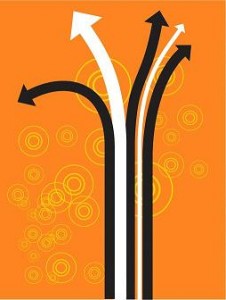 I recently completed a proposal to coach an executive, and put a lot of thought into the “program” around changing behavior. I approached it as I would any change project in an organization, breaking it into phases that included Assessment, Development, Execution and Evaluation. The difference this time was instead of implementing a new process, technology, or even structure, we are going to be implementing new behaviors – one of the trickier challenges of the practice of Change Management. One of the key components of the program is understanding how long it will take to identify a behavior that we desire to change, and then successfully change it.
I recently completed a proposal to coach an executive, and put a lot of thought into the “program” around changing behavior. I approached it as I would any change project in an organization, breaking it into phases that included Assessment, Development, Execution and Evaluation. The difference this time was instead of implementing a new process, technology, or even structure, we are going to be implementing new behaviors – one of the trickier challenges of the practice of Change Management. One of the key components of the program is understanding how long it will take to identify a behavior that we desire to change, and then successfully change it.
Ariane de Bonoisin, Chief Change Optimist (how much do I love THAT title?), author of The First 30 Days and founder of first30days.com says “Despite the change — be it unpredictable or self-propelled — the first few days and weeks are often the hardest, most emotional time. It’s when we have the most questions, emotions, doubts and fears, and when decisions need to be made. This is also the time when we are most in need of direction, information and support. Thirty days is enough to get started in the right way…”
However, is it enough to create sustained behavior change?
Some would argue that the prospect of changing, in and of itself, is enough to cause one to fail. Robert Mauer, Ph.D, author of The Kaizen Way, says “all changes, even positive ones, are scary. Attempts to reach goals through radical or revolutionary means often fail because they heighten fear.” He proposes the use of the “kaizen” technique, taking small, comfortable steps towards improvement to make long-term, sustainable changes. He describes our typical approach to change as “innovation” strategy, defined as a “drastic process of change. It occurs in a very short period of time, yielding a dynamic turnaround. Innovation is fast and big and flashy; it reaches for the largest result in the shortest amount of time.” He believes this strategy will very likely cause you to fail, because the size and energy around the change effort will alert your “lizard” brain and light up your flight or fight response. And usually, unless we have willpower of champions, we take flight (go sit on the couch with a bag of Doritos). He notes that this strategy CAN work, but sees that many people are crippled by the belief that it’s the only way to make a change.
Ariane embraces change and encourages us to “change our view of change” through her nine principles. Robert says change is scary, so do the smallest change possible to not wake up the sleeping giant, the lizard brain, so you can still move forward. I say it’s a combination…change can be approached through a proven process, but sometimes the key to long-term success is to create small changes that are easy to accomplish that will lead towards great improvement. I believe that depending on the person, and the change, that you need to create the plan that will work for you. And the first plan might fail!
So, tomorrow, I am officially piloting my change process publically with a client I know well: me. As a Change Agent AND Change Optimist (thanks Ariane!) I am interested in sharing my journey through a change process with you. I will take 30 days of April to (begin) to tackle one behavior change. And if all goes well, I’ll be signing up for another in May. I hope you’ll follow along in my journey — as you know, one of the principles of success is your support network! Tune in tomorrow to see what I plan on changing in my life.

A big “woot” to you for kicking this off! I’ll be checking in daily for inspiration and insights…